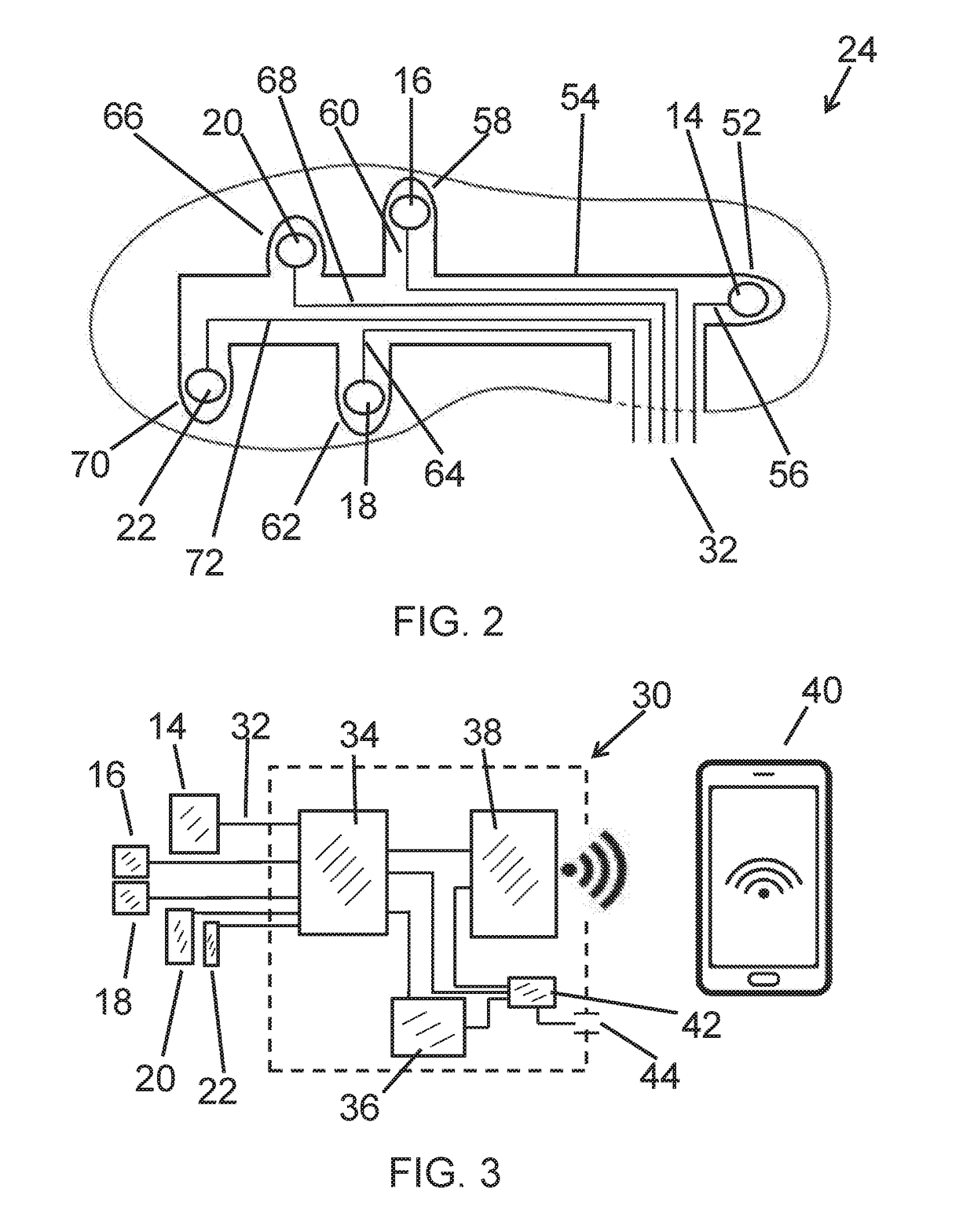Passive five sensor insole real-time feedback device
a real-time feedback and sensor technology, applied in the field of foot sensor feedback devices, can solve the problems of only partial brain function of the victim, oxygen deprivation, and loss of neural pathways,
- Summary
- Abstract
- Description
- Claims
- Application Information
AI Technical Summary
Benefits of technology
Problems solved by technology
Method used
Image
Examples
Embodiment Construction
[0066]The feedback device of the present invention determines when a person has placed enough weight upon his / her foot in order to safely take the next step, and then communicate that information to the person via a haptic device on the person's ankle or leg and / or an audio, visual and / or vibration feedback display on an application on the person's smart phone.
[0067]Reference is now made to FIG. 1, illustrating a walking person 10 using the real-time passive foot sensor insole feedback device 12 of the first embodiment of the present invention. The feedback device 12 has multiple foot sensors 14, 16, 18, 20 and 22 in an insole 24 adjacent to the person's foot 26. The foot and the insole are in a shoe 28. The present embodiment presents a five sensor feedback device.
[0068]The sensors measure the force exerted by the foot on the insole while the person is walking on that leg and then sends force data signals to the microprocessor in the data analysis and haptic response unit 30 on the...
PUM
 Login to View More
Login to View More Abstract
Description
Claims
Application Information
 Login to View More
Login to View More - R&D
- Intellectual Property
- Life Sciences
- Materials
- Tech Scout
- Unparalleled Data Quality
- Higher Quality Content
- 60% Fewer Hallucinations
Browse by: Latest US Patents, China's latest patents, Technical Efficacy Thesaurus, Application Domain, Technology Topic, Popular Technical Reports.
© 2025 PatSnap. All rights reserved.Legal|Privacy policy|Modern Slavery Act Transparency Statement|Sitemap|About US| Contact US: help@patsnap.com



